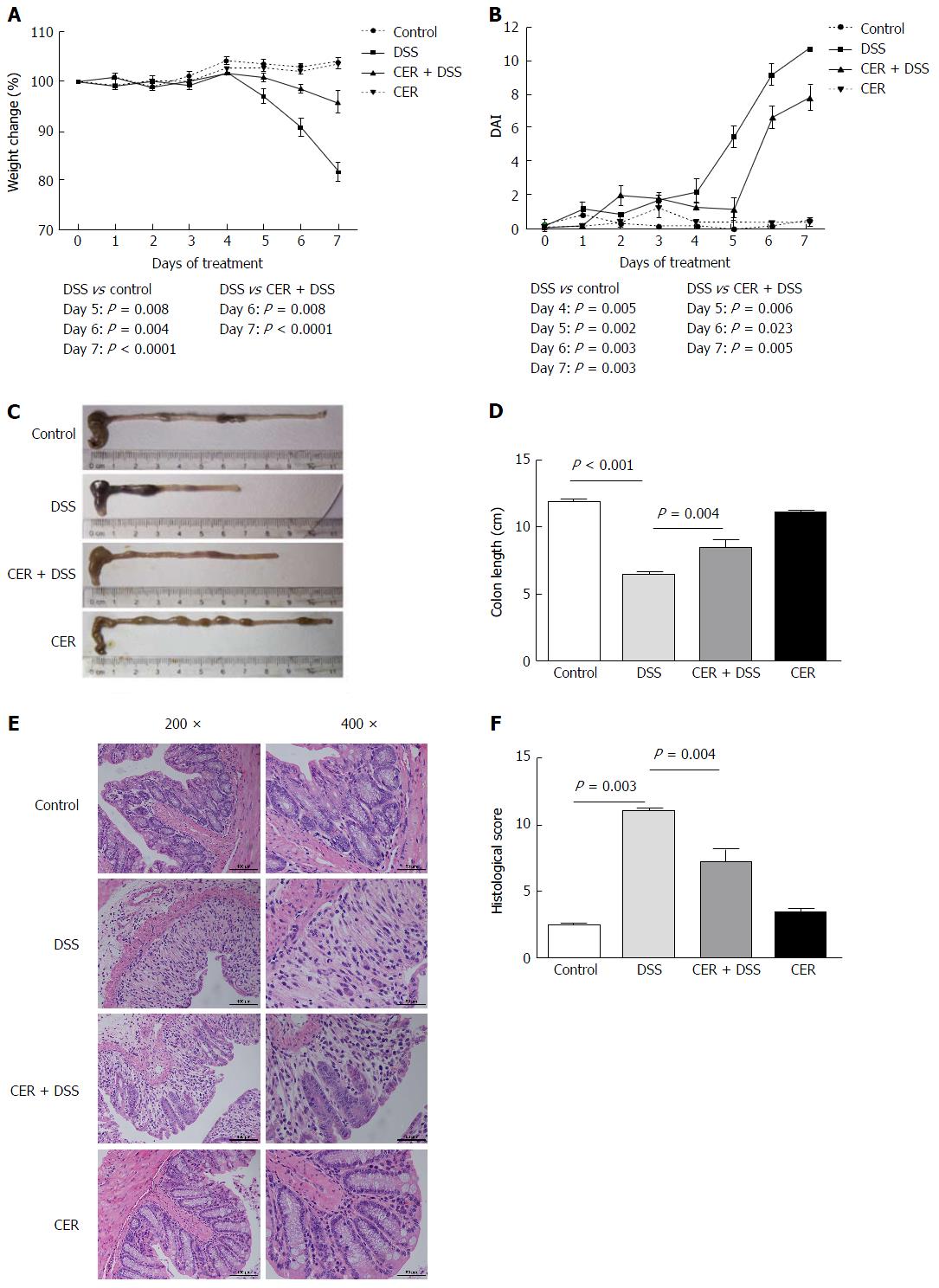Copyright
©The Author(s) 2017.
World J Gastroenterol. Aug 21, 2017; 23(31): 5700-5712
Published online Aug 21, 2017. doi: 10.3748/wjg.v23.i31.5700
Published online Aug 21, 2017. doi: 10.3748/wjg.v23.i31.5700
Figure 1 Treatment with S.
japonicum cercariae results in reduced susceptibility to dextran sodium sulfate-induced colitis in mice. Mice were infected with 20 ± 2 S. japonicum cercariae percutaneously, and experimental colitis was induced by administration of 3% DSS at 4 wk post infection. A: Weight change in percent; B: DAI based on weight change, stool characteristics and bleeding; C and D: Colon length; E: H and E staining was performed in colonic sections (original magnification, × 200 and × 400); F: HS was scored as described in Materials and Methods. n = 6. The mice infected with S. japonicum cercariae presented longer colons, decreased weight loss and lower DAI and HS after being induced with DSS compared to those without parasite infection. DSS: Dextran sodium sulfate treatment alone; CER + DSS: Infection with S. japonicum before DSS treatment; CER: S. japonicum infection alone.
- Citation: Liu Y, Ye Q, Liu YL, Kang J, Chen Y, Dong WG. Schistosoma japonicum attenuates dextran sodium sulfate-induced colitis in mice via reduction of endoplasmic reticulum stress. World J Gastroenterol 2017; 23(31): 5700-5712
- URL: https://www.wjgnet.com/1007-9327/full/v23/i31/5700.htm
- DOI: https://dx.doi.org/10.3748/wjg.v23.i31.5700









